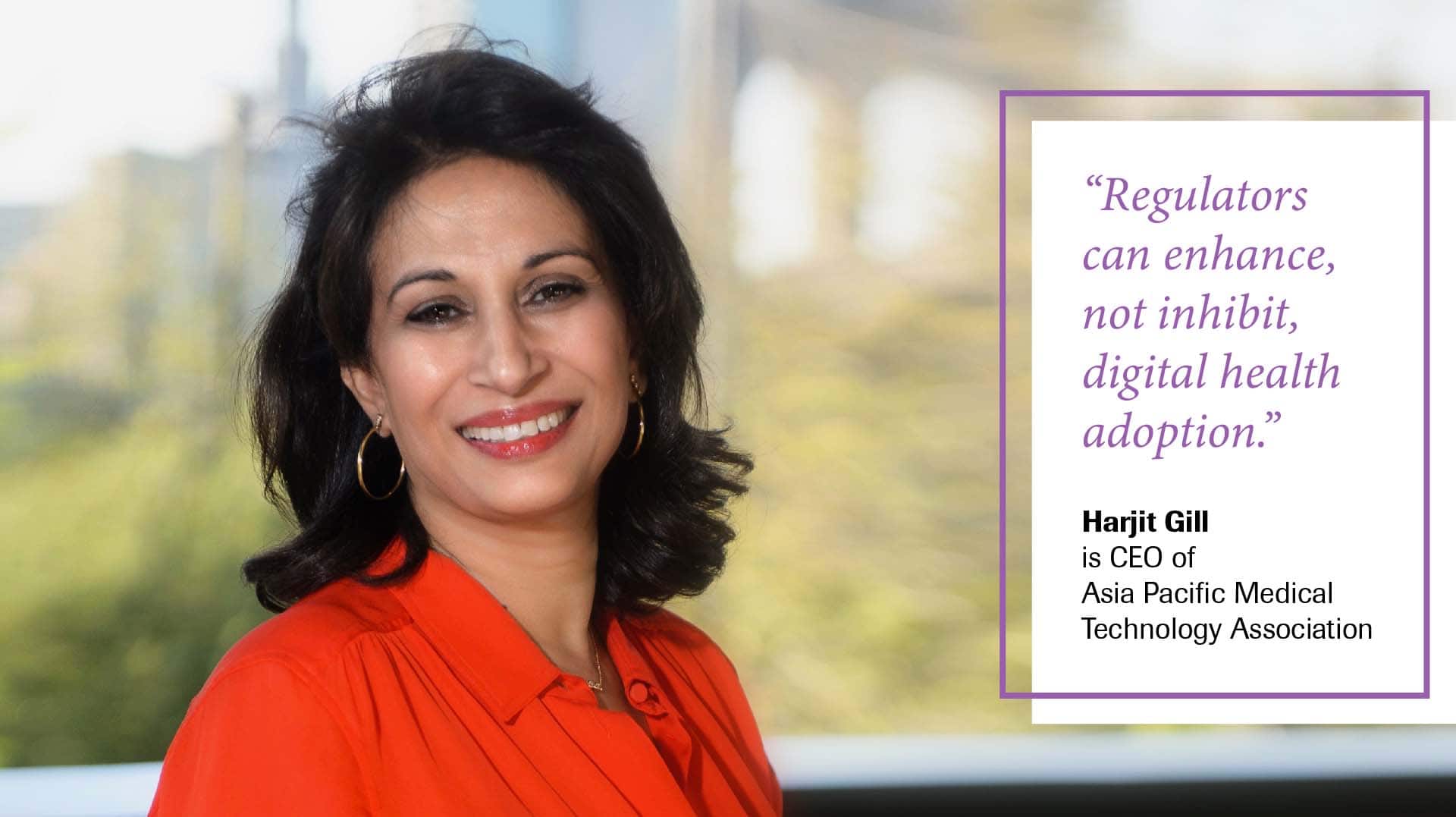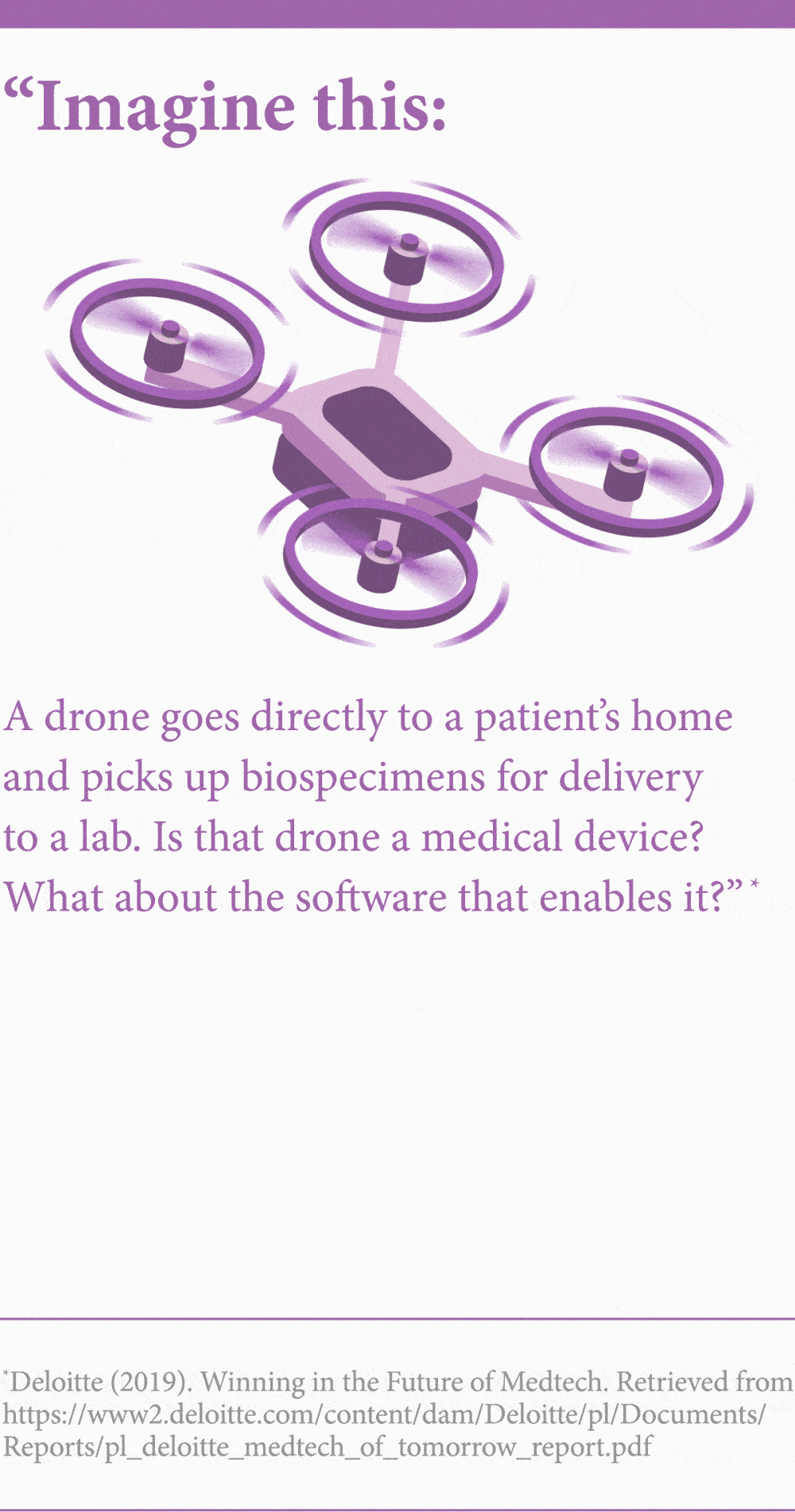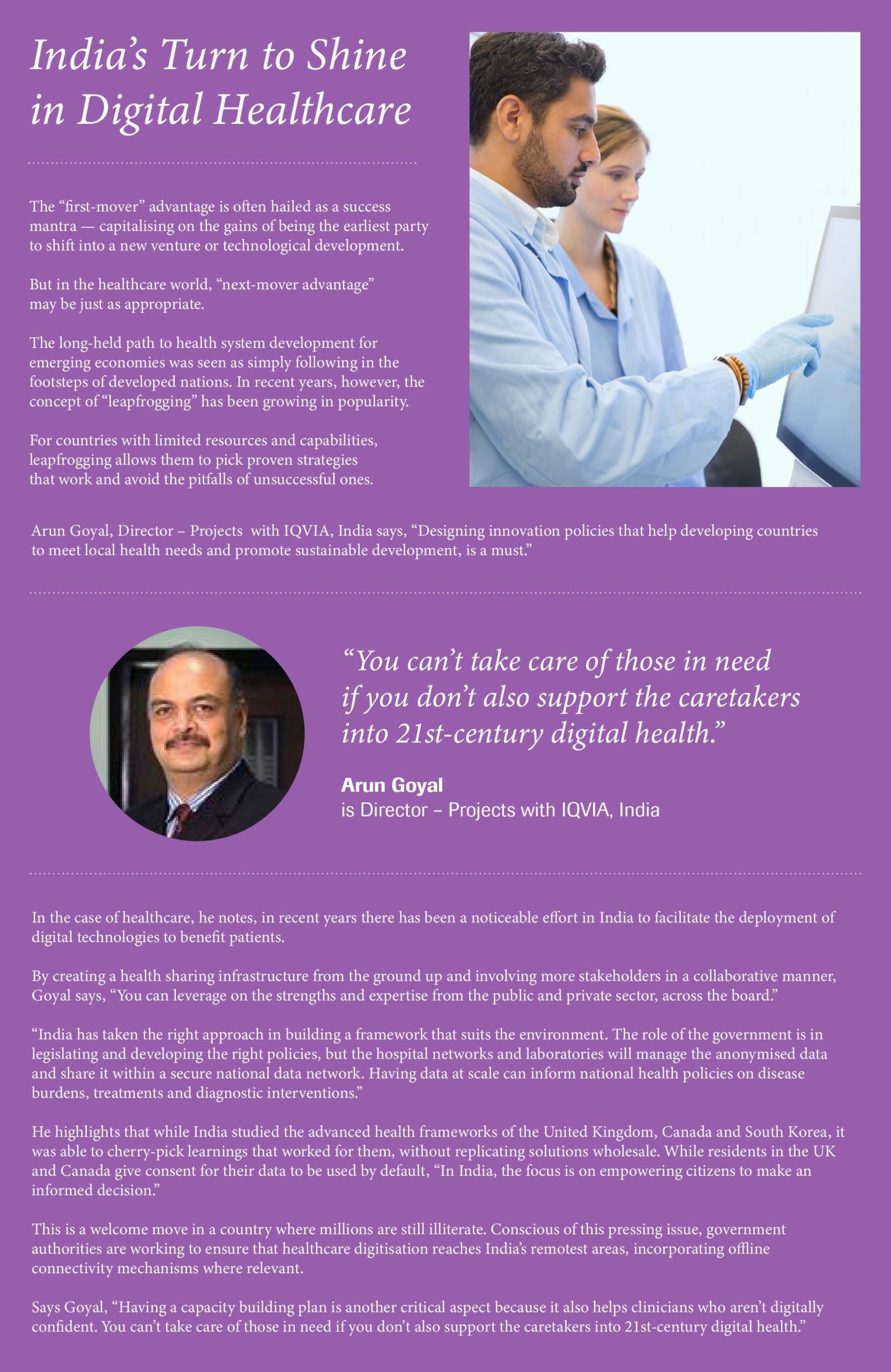It’s never been more crucial for health regulators and digital innovators to collaborate. Dia:gram explores the way forward.
“Necessity is the mother of all invention”, as the famed proverb goes, and it is a sentiment that couldn’t have been more apt in the face of a global public health emergency. The world was forced to develop and deploy healthcare innovations faster than ever.1 And in many cases, that is exactly what happened — the first testing solution for the novel coronavirus was released in a matter of weeks,2 not years, and multiple vaccines were developed and have since been used for mass inoculations in many countries.3
A report by McKinsey published at the height of the pandemic unsurprisingly found responses to COVID-19 have speeded up the adoption of digital technologies by several years,4 and that many of these changes could be here to stay. Yet, when it concerns human health — where any decision can be a matter of life or death, the medical world tends to be cautious about “light-speed” solutions.5
This dichotomy is especially heightened in the context of digital health. By its very nature, technology is powered by an iterative, test-and-learn style: release a product in an imperfect “beta” form, then iron out the bugs as users explore the product. That approach might work for innocuous needs, but not when it comes to health.
A part of the inherent challenge in healthcare is the meeting of two incredibly different mindsets: the health policy regulator and the medical product innovator. How can these two approaches work together to find equilibrium between governance and innovation?
It is this question that the Asia Pacific Medical Technology Association (APACMed), a regional trade body aiming to improve patient care by uniting medical technology stakeholders, has tackled in their recent white paper.6 Their findings suggest that better aligning expectations between manufacturers and regulators can be an important first step. By communicating more clearly, manufacturers enable regulators to understand not just how a digital solution can be used, but more critically — how it was developed. And for regulators, harmonising frameworks and recognising similar requirements for regulatory submission dossiers can help smooth the path for the timely introduction of innovative technologies.
Harjit Gill, APACMed’s CEO, notes how important it is to clear stumbling blocks in this area. “We all know that Asia Pacific, with its tremendous population size and economic productivity, lags behind in key healthcare indicators.” Digital health, she notes, seeks to overcome social and geographic barriers that hinder access to healthcare. “Organisations are increasingly calling for greater attention to this unmet need as they form new partnerships along the value chain.”
The absence of a single, unifying regulatory authority, however, means this is easier said than done. In a region where different regulatory bodies can often have their own local processes and jargon, some may point to the vast differences that exist in how countries define an “algorithm” or “software”.

Regulating a Continent
Asia’s diversity and booming populations are part of what make it an economic powerhouse.7 But this breadth can also create problems for a stable, holistic framework for health regulation.8 Digital health technology is a particularly thorny area, Gill notes, because of the plethora of agencies involved.
Apart from governing bodies, other stakeholders include tech firms, diagnostics and medtech companies, start-ups, investors, payers, and medical associations, to name just a few.
Related reading: Two Countries, One Goal: Digital Health Readiness

“Fortunately, there is great impetus behind digital health given its potential to transform healthcare in a way that overcomes major barriers like geographic disparity, information asymmetry, and manpower shortages,” says Gill. So how can those barriers be overcome? “The trick is to start simple,” Gill says, and involves “aligning innovation with overall health system ambition, and achieving small wins to build trust across the entire ecosystem.”
When so many stakeholders have strong opinions, neutral parties can also be vital mediators. Gill sees APACMed’s role as bringing a wide diaspora of people to the table and moving the discussion forward. Such an open forum can be invaluable, considering that in a 2020 survey of global medtech company leaders, policy and regulatory issues were the second most pressing challenge for companies, after developments in technology.9 Yet, as the report authors noted, regulations need not necessarily cause problems for companies, but can open doors to opportunity by providing clarity and levelling the field for all players.
To that end, Gill says, the near-term goal for regulators needs to be creating the pathways to allow digital health innovation to flourish. She cites Germany as a role model, where “digital health is approved (and reimbursed) for up to one year in order to gather enough evidence about the impact to make a final decision about wider adoption.”
Policy support helps everyone, because as Gill explains, medtech companies in Asia Pacific typically reinvest seven percent of revenue back into research and development. By buttressing innovation, regulators can then create a virtuous cycle where companies can plough current successful product profits into birthing new, even better digital health solutions.
“Regulators can enhance, not inhibit, digital health adoption,” as Gill enthusiastically puts it.
“In fact, we’ve seen that when new regulatory requirements are instituted, there is a 20 percent surge in medtech filings. There are now an estimated 15,000 filings in Asia Pacific each year.”
More to Be Done for the Future of Healthcare
So what other improvements are needed to shape the future of healthcare?
On a macro level, the frameworks around digital health are still not quite ideal for an industry undergoing such dynamic change. As Gill explains, they are either too loose, treating digital health like an unregulated business-to-consumer platform, or too severe, expecting traditional medical device protocols. And the lines will only get blurrier, as multiple industries evolve — and interact.
Software and data will continue to be critical drivers, but regulatory agencies must be ready to react quickly to novel tools and the flood of information that will come with their use.
Another challenge is that the “intended use” and “actual use” of medical tools (including software) may vary considerably. This calls for regulators to do some crystal ball-gazing and try to foresee what the actual uses may be — something that might delay the process of approval.
Making progress against such fundamental yet monumental challenges may seem daunting. Maintaining prudence is the key, says Gill. “Innovators must remain patient, especially those who may be new to healthcare and need to appreciate the legacy behind the highly regulated environment. In the end, we are speaking about patients’ lives, so there is virtue in proper diligence.”
Stay updated on healthcare and diagnostics news with Roche Diagram magazine.

*The information contained in this article was extracted from Edition 2021, Vol 9.






